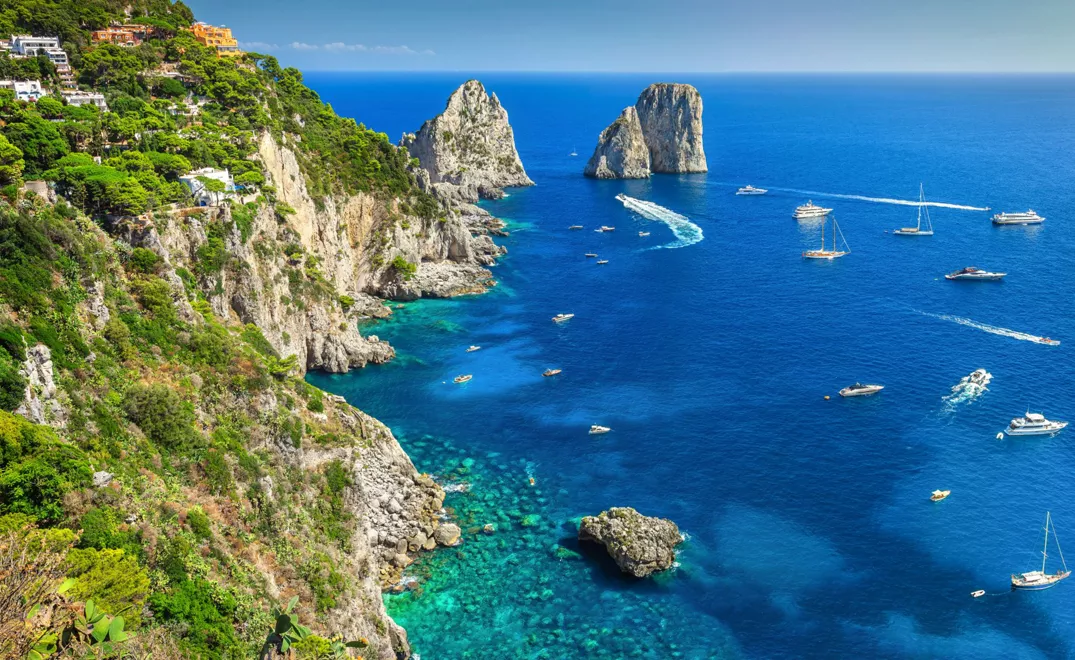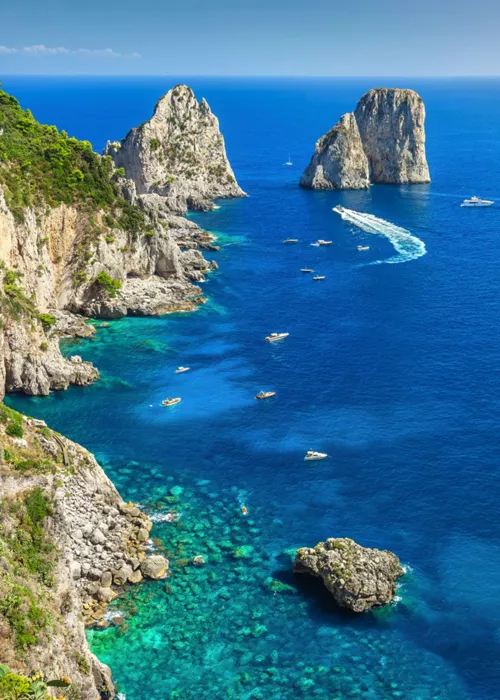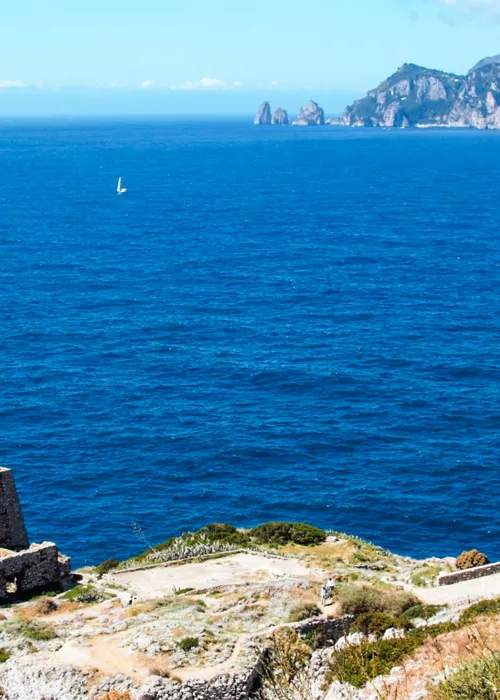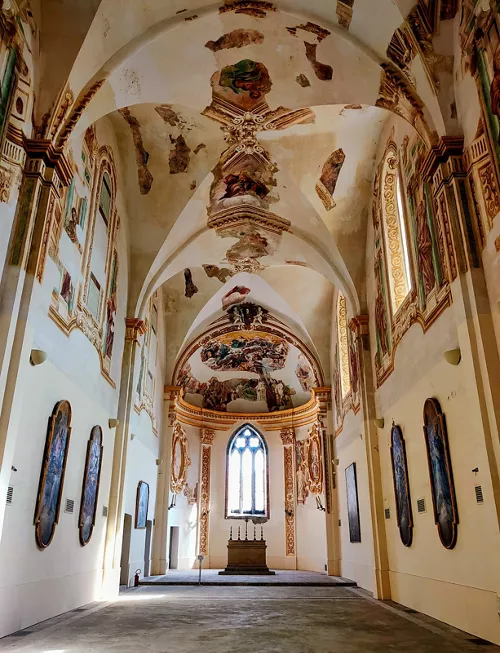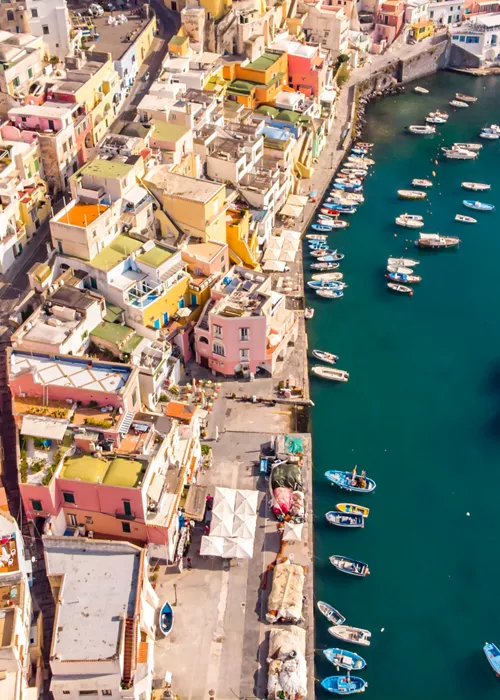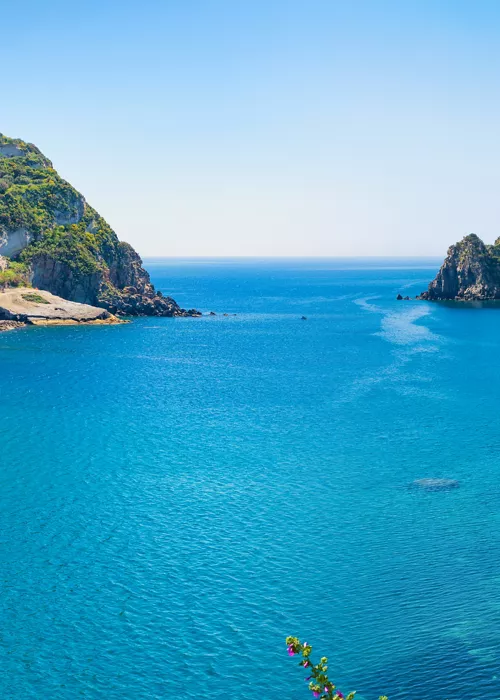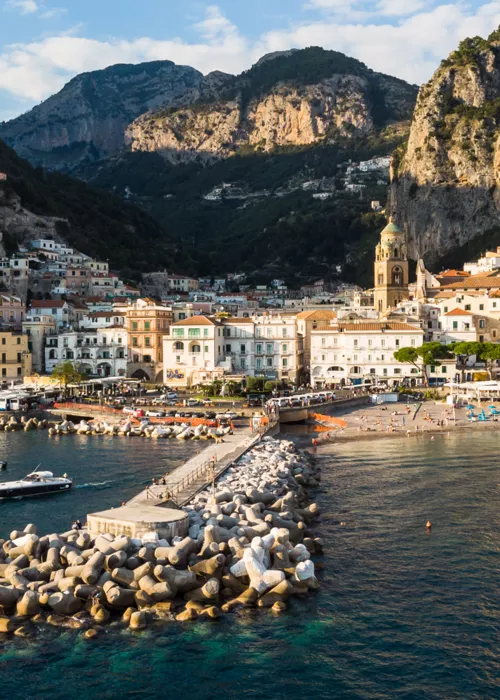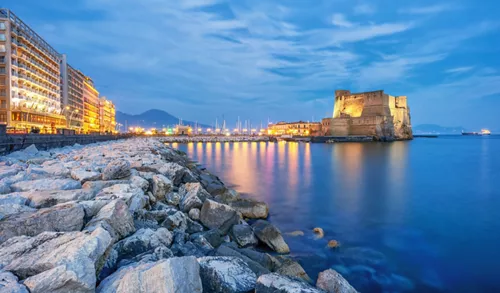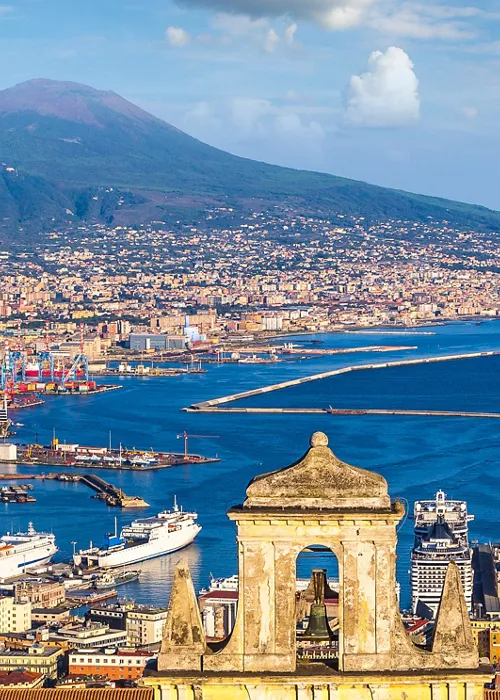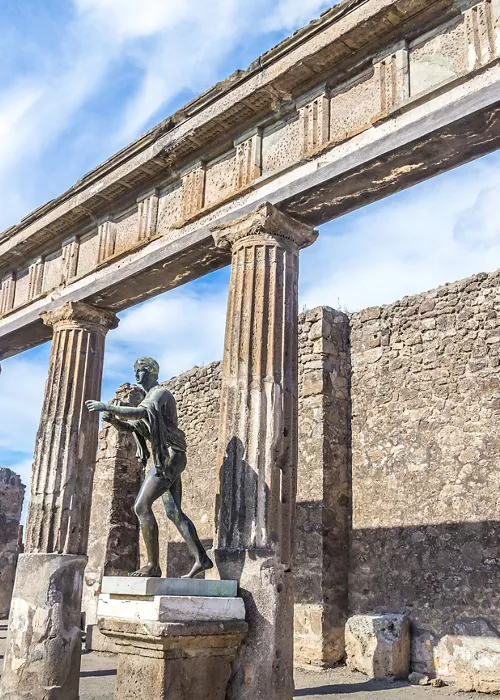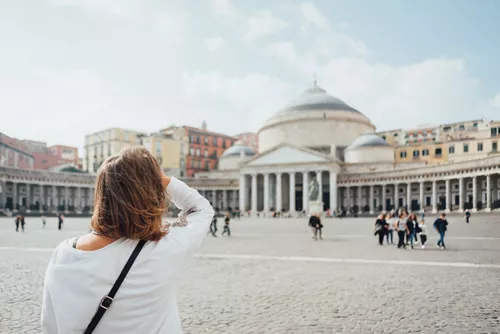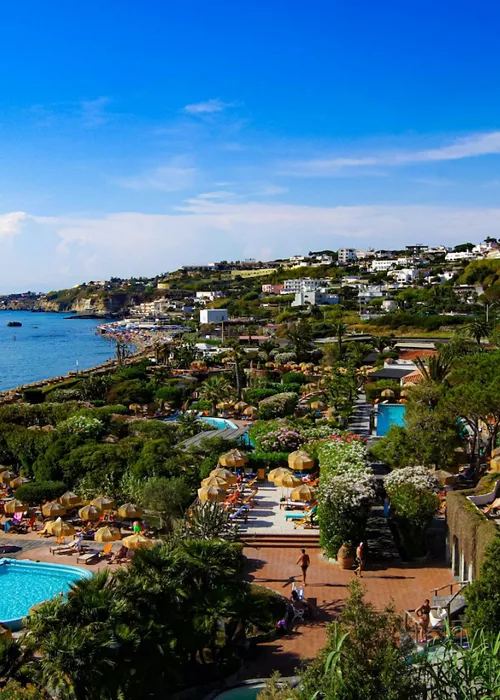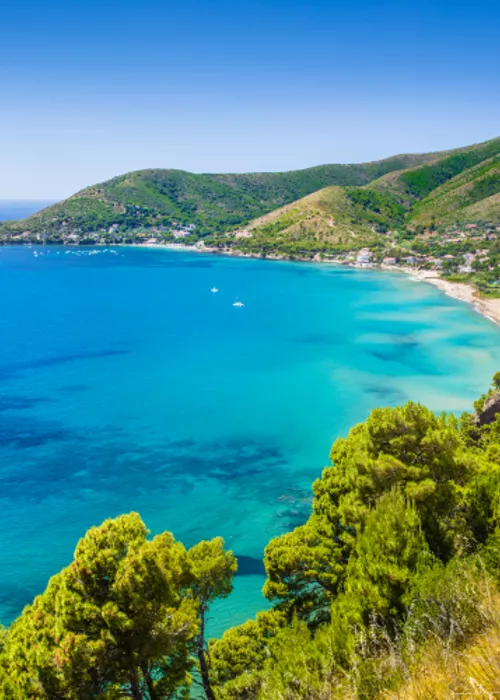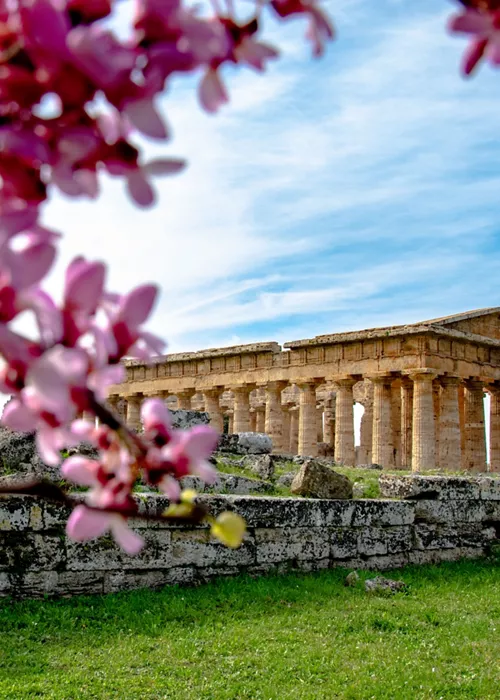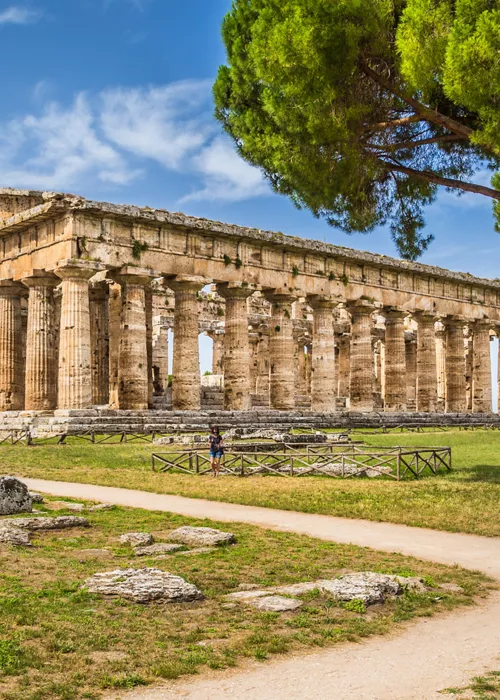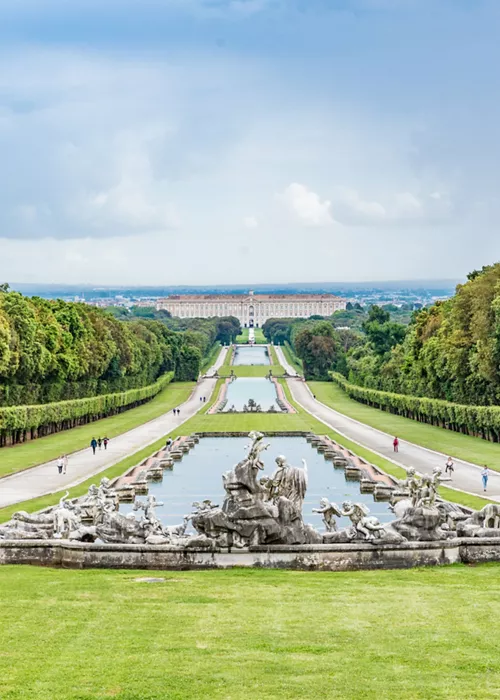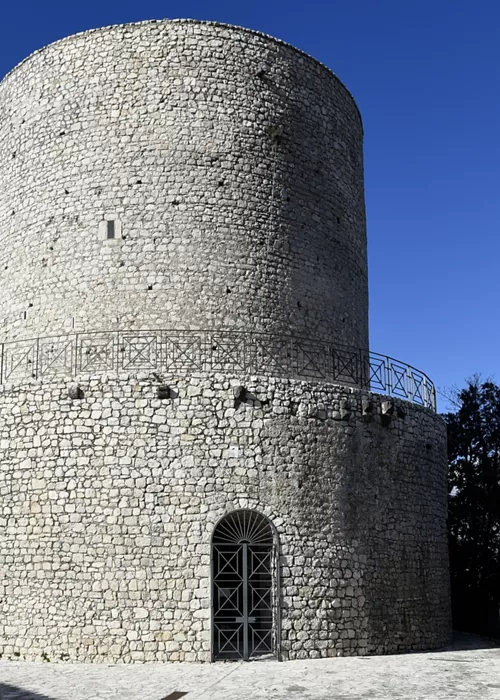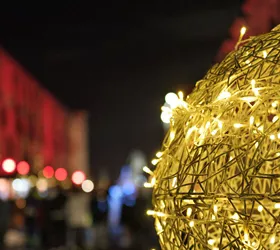Capri, island of dreams
4 minutes
Exploring Capri is easy on foot, walking along between the remains of the Roman emperor's villas, and the residences left by those who fell in love with the island between the nineteenth and twentieth centuries. It is not only for those looking for glamour: Capri offers an extraordinary history, a spectacular sea, an unrivaled panorama and refined hospitality.
What to see in Capri
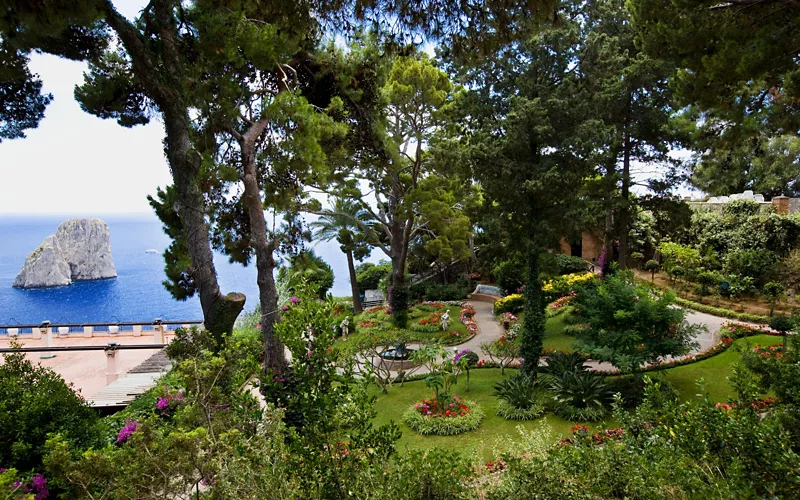
You’ll understand at first glance: the fame given to Capri is well deserved.
The shape of the island offers infinite vistas: cliffs overlooking the sea, impassable cliffs flanked by sloping terraced terrains. A more than generous amount of nature, an ideal climate and a variety of rare botanic plants: 850 species, some of these thanks to the many travelers who lived there, bringing with them seeds and plants from the five contents.
The sea is splendid, with caves and sea stacks. Capri’s history is full of events, stories and characters, including that of the Roman emperors and European aristocracy who rediscovered it in the nineteenth century. It would be a real shame to go there for a rushed day and not stay long enough to capture its genius loci (spirit).
Arriving from the port, you go up to the famous Piazzetta by cable car, a delightful open space dominated by the clock tower with coffee terraces and a balcony overlooking the sea. This is the crossroads of all the paths for exploring the island.
Half an hour from the Piazzetta, following the blue and green earthenware arrows, a nice path between the gardens of beautiful houses leads you to Villa Jovis. The magnificent archaeological site overlooking the sea in front of Punta della Campanella on the Sorrento peninsula. This was one of the palaces in which Emperor Tiberius made Capri the caput mundi, for a decade from 27 to 37 AD.
A little further on you’ll find villa Lysis, commissioned by an eccentric French man Jacques Fersen, as a romantic getaway in the depths of a park, which you can visit. Another noteworthy twentieth century villa is the one that writer Curzio Malaparte had built on the cliff. It is an example of rationalist architecture, it is private, but can be seen from above from via del Pizzolungo.
From the Piazzetta, if you head South, you reach Certosa di San Giacomo, which documents the monastic Middle Ages of Capri. From there you can take via Krupp,built by the German king of steel in 1902, and considered by many as the most beautiful street in the world, however it is often closed due to landslides.
Go down to Giardini di Augusto, a botanical garden with sea views, to reach the inlet of Marina Piccola, a rocky beach on turquoise sea.
From here head back up to the Acattolico monumental cemetery, from there you’ll find the road for Anacapri.
What to see at Anacapri
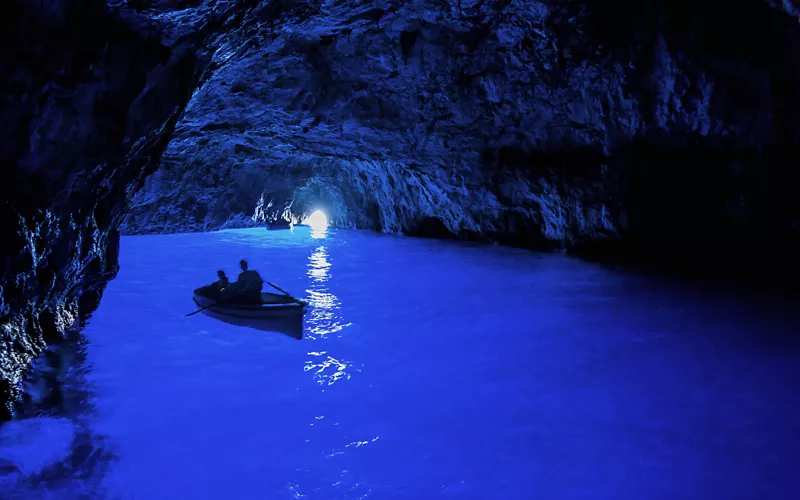
In Anacapri, from the highest part of Capri, it is easy to understand how this snail shaped island may have captivated Roman emperors, captains of industry, writers and poets: Norman Douglas, Maksim Gorkij, Alberto Moravia, Curzio Malaparte, Compton Mackenzie, Ada Negri, to name but a few!
In the historic centre you must see the Casa Rossa, red house, an eclectic styled construction from 1876 built by an American colonel. It now exhibits a permanent collection of paintings with views of the island, and 4 Roman statues found in the Grotta Azzurra, blue cave.
The San Michele church is not to be missed, also noteworthy the splendid Neopolitan majolica paving stones from the eighteenth century, the ruins of the Barbarossa castle, the excavation remains of villa imperiale di Damecuta, the chairlift vistas up to Mount Solaro (589 m) and of course the San Michele Villa. The San Michele Villa of whitewashed walls, was built at the end of the 19th century by the Swedish doctor and writer, Axel Munthe. He contributed a lot to making Capri famous worldwide with his bestseller The Story of San Michele, which is the autobiography of his life, his truly extraordinary life.
As a museum, the villa preserves statues and relics from the Roman era found by Munthe while excavating archaeological sites. It would be worth visiting just to enjoy the legendary panorama along the row of columns, on the corner of the garden. Munthe (who followed several archaeological campaigns even in Egypt) placed a pink granite Sphinx here dated from the 11th century BC. Commenting on his house he wrote “I want my house open to sun and wind and the voice of the sea, like a Greek temple, and light, light, light everywhere!”.
Under Villa San Michele, you can go down to the Marina Grande port. Taking the so-called Scala Fenicia, (Phoenician staircase of 970 steps), although built in stone by Greek colonists in the sixth century BC. You’ll see lemon groves that look like gardens and the sea always on the horizon.
One thing left to do, have a little boat tour of the island: the Grotta Azzurra, blue cave is a truly stunning shade of blue with an awe inspiring view of the sea stacks.
Quite evident by now, Capri’s fame is more than well deserved.

